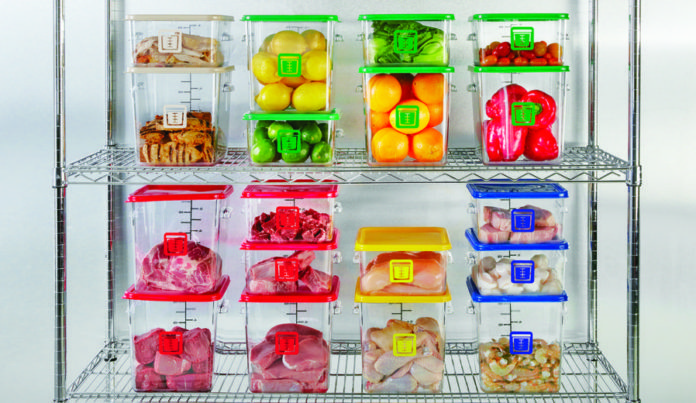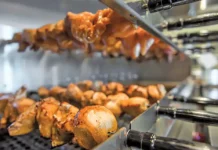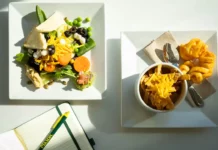
If I were to ask you what you think is driving your food cost up, what do you think you would answer?

I bet you would tell me it’s the cost of your products. I bet you would go on to say that your broad-line distributors are gouging you on price, forcing you to run to Costco or Sam’s Club to purchase food. While this might be a typical independent restaurant owner’s mindset, the reality is your distributor probably isn’t your problem. Your lack of systems is the Achilles heel of your restaurant’s food cost.
Don’t get me wrong; the cost of food has been rising steadily as long as I can remember. There are marketing associates out there who hurt the small guy with pricing, but they are the exception not the norm. Also, each and every truck that pulls up to your restaurant hands you an invoice that has some products where the cost of those products has gone up in just the last few days.
While rising prices can and will ultimately reduce your profits, they won’t as much as you might think if you have the right systems in place. For example, if you use SMART Systems Pro, my company’s restaurant management software, to create and maintain your recipe costing cards, every invoice comes in and gets verified for pricing and quantities in your system. This then automatically updates your product pricing in your recipe costing cards, for your next order, and inventory based on FIFO (first in, first out) pricing. By automatically updating the prices you paid for each product, it gives you the ability to figure out your ideal food cost and change your menu easily to counter prices going up.
You do this by running a menu mix report on your point of sales (POS) system to see how many of each item that your customers are purchasing. By multiplying the number of each item sold by the menu item’s recipe cost and what you sell that product for, you will quickly know how much product you should have used and what your gross sales should have been for that time period. Total each of these numbers up and divide use into sales and in moments you know what your ideal food cost should have been if you ran a perfect restaurant, no waste, not theft, no spoilage. (By the way, a perfect restaurant does not exist.) Ultimately based on what your customers actually purchased, what should your food cost be?
By producing your ideal food cost in the form of your menu mix, you will have the power to raise prices as little as 25 cents with pinpoint accuracy on maybe one or two items in each menu category to counter the increased costs. You can do this without shocking the guest. When you have this information, rising prices will have a minimum effect on your bottom line.
If it’s not rising prices that are killing your profits, what is it then? Simply put, it’s how you run your kitchen.
In the example above, you have recipe costing cards completed for every item on your menu. This means you have set a standard portion for every ingredient you put on a plate. Part of your chef or kitchen manager’s job is to control your food costs, train your kitchen crew to execute the menu as written and ensure your guests get the same dish every time they order it. The result should be controlled costs and increased consistency, which both improve your bottom line and increase your sales because the result is happy customers.
Let’s say your chef or kitchen manager is NOT doing those three things. Let’s say as a result of not doing those three things, your cooks are over portioning each dish that goes out by as little as 10 percent. You might think, “It’s only 10 percent, so what?” You’re right, it doesn’t sound like much, really, but most kitchens are over portioning by much more. Think about it, can your eye see when a cook has over-portioned rice by 10 percent? Can you easily see 10 percent more shredded cheese, lettuce, gravy, sauce, etc.? The answer is “NO!” When you see there is too much food on a plate, you are probably seeing 25 percent or even more extra on the plate.
So here’s why 10 percent over portioning is a problem. If your ideal cost is 30 percent based on your recipe costing cards and menu mix report, and you over portion each dish by only 10 percent, you change your ideal food cost by 3 percent. That means instead of running a 30 percent food cost, you are running a 33 percent food cost. If you were to have $100,000 in food sales per month, you just robbed yourself of $3,000 a month or $36,000 a year in bottom-line profitability!
While it’s important to get good pricing for the products you purchase, if you keep up to date, accurate recipe costing cards, you will have the ability to make small changes to your menu that counteract the potential negative impact on your business. If you don’t follow those recipe costing cards, you can quickly give away any potential profits right back to your guests.
To make the money you deserve in this small-margin industry, it requires your kitchen management to ensure your team is trained on the recipes and executes the recipes — period. Eliminate your Achilles heel with systems!
Still need more help on having effective manager meetings? Learn more at The Restaurant Expert website.
























Comments are closed.